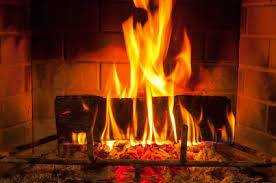A year without a Yule log. Gods, what a grim prospect.
The Yule Log is the holiday's oldest thew (custom), and by all accounts brings luck to the household for the year to come. Surely anyone can see that a fireless hearth at Yule bodes ill. If you have the wherewithal to uphold this thew, it well behooves you to do so.
The logical time for the burning of the Yule Log would be Midwinter's Eve, but Mother Night is one night of the year when I'm certain not to be at home, since our ritual is always over at R___'s house, where the coven Yule Log crackles merrily on the hearth throughout the festivities.
So in practice, I've tended to light the household Log on the night of the 24th: what's usually the Fourth or Fifth Night of Yule. It's a nice, quiet night when I don't generally have a lot of other things going on and, after all the hurly-burly of the lead-up to, and beginning of, Yule it's nice to spend a quiet, contemplative evening with the Fire.
Well, but this year I just couldn't bring myself to do it. Lows that night were in the double digits below zero, and the prospect of opening the damper and having all the warmth in the house go up the chimney on the coldest night of the Winter so far was just not a relishable prospect.
I remind myself that Yule begins, not ends, with the Sunstead (Solstice). Thirteen Nights we've got, for the burning of the Yule Log.
So now I'm thinking New Year's Eve, or possibly Thirteenth Night. We'll see what the weather looks like when we get there.




















